If your tree is slowly turning into a shrub by sending up tree suckers—a host of thin, upright branches from the base of the trunk or soil near the base of the tree—then here are some tips on why it might be happening and how to remove suckers from trees.
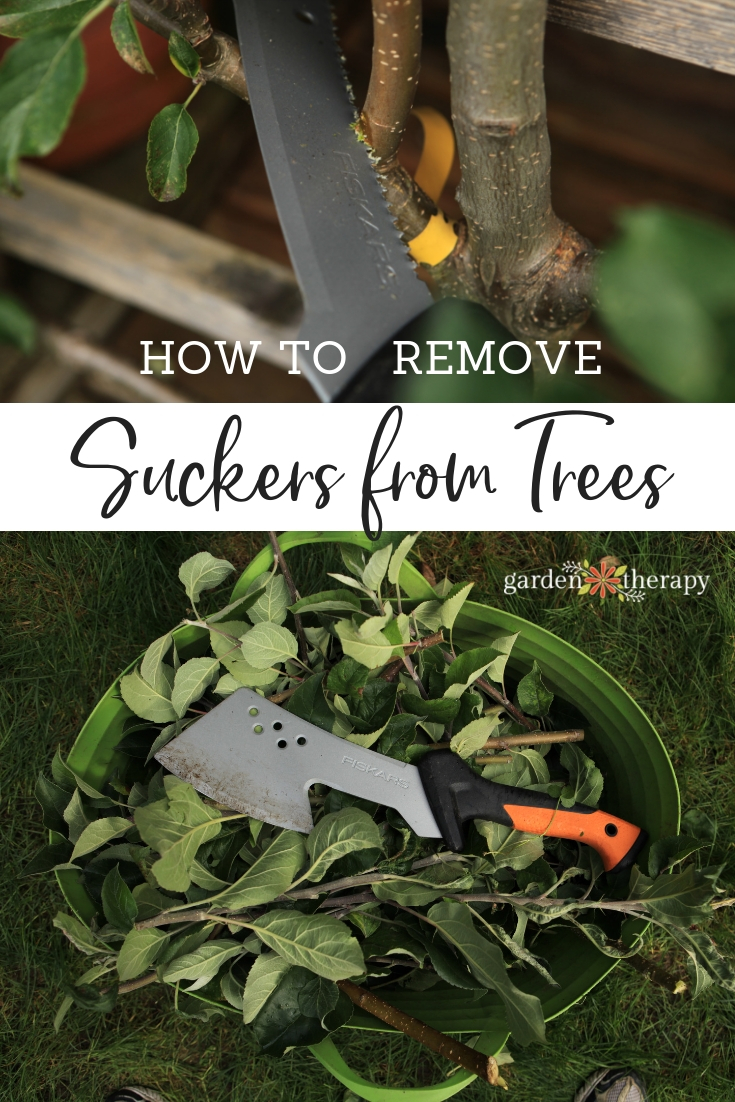
What Are Tree Suckers?
Trees are very good at what they do. Growing, that is. You often see suckers at the base of trees, tiny shoots that look like mini trees emerging. When overgrown, they create a shrub-like appearance. You may also see them emerge from a stump of a tree that has been cut down and continues to live.
Trees send up suckers as a reaction to stress. Your smart tree is putting up an effort to survive in a less-than-perfect environment. Those suckers are a way of multiplying, ensuring the lineage of the tree lives on. If the tree can’t survive, the suckers will grow in its place.
Why Do Tree Suckers Grow?
Suckers are often seen on urban trees that are planted in the “hell strip,” the strip of grass or garden between the street and the sidewalk. This strip is often a very stressful place for a tree to grow, with poor soil that is flanked by concrete. The soil gets compacted from the pressure on the paved surfaces, and the concrete generates a lot of additional heat.
Trees that have been growing in the hell strip will not thrive and produce as well as their counterparts in healthy soil with ample room for roots. These trees will often have more diseases and pests, and they send up suckers as a response to the stress they are under.
Drought is another reason why a tree might send up suckers. Upright branches from the base or upper branches as a result of drought conditions are called water sprouts. Water sprouts are the tree’s reaction to being thirsty.
A tree can also send up water sprouts and suckers as a result of improper pruning. A description of this is covered in this article on pruning.
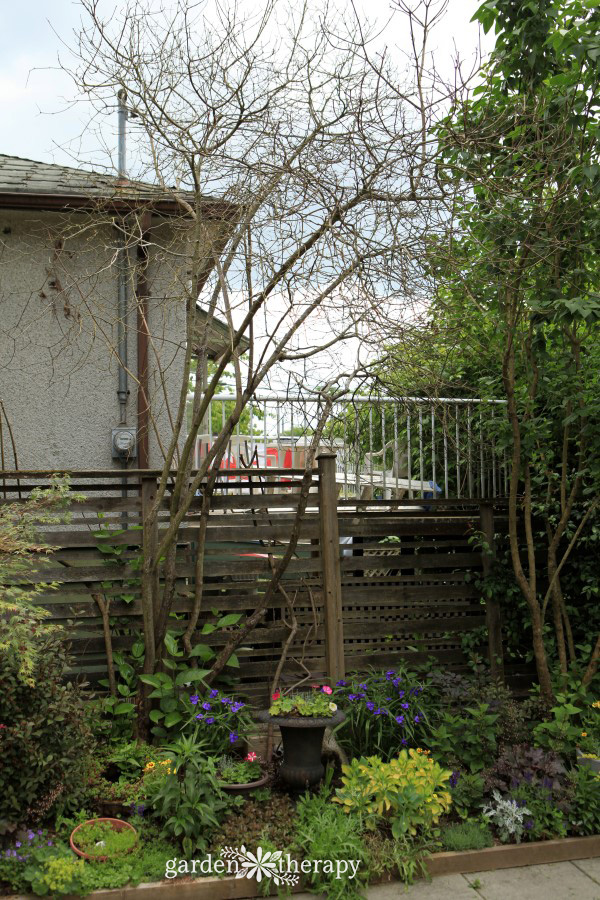
How to Stop Tree Suckers
As much of a nuisance as they are, the issue is primarily aesthetic. The tree is calling out for help, and if you listen perhaps you can help by improving conditions for the tree. Test your soil to find any glaring issues in it that could be causing distress.
Most trees don’t need to be watered, but you may want to consider soaking your trees if they are young or your area is experiencing excessive heat. Poor pruning or a lack of pruning maybe your other option for preventing more tree suckers from occurring.
If you can’t find a solution, you can simply choose to remove the suckers and keep up on the job as they appear. In some cases, like with older trees, this is not a bad solution.
You could provide more water, better soil, and prune more carefully, but as the tree ages it will be more prone to suckers and this may just be how you have to manage it for the foreseeable future.
Young trees, however, need more attention to the cause, as they shouldn’t be so stressed out at such a young age.
How to Remove Suckers From Trees
I have a couple of trees that I regularly will need to remove suckers from. My Corkscrew Hazel, Corylus avellana ‘Contorta’, has gorgeous contorted and twisted branches that look best when the leaves have fallen. It’s prone to suckers that hide the true beauty of the trunk of the tree so they get chopped off regularly.
And a thank you to Fiskars for providing me with a hatchet and billhook saw to help me remove the tree suckers!
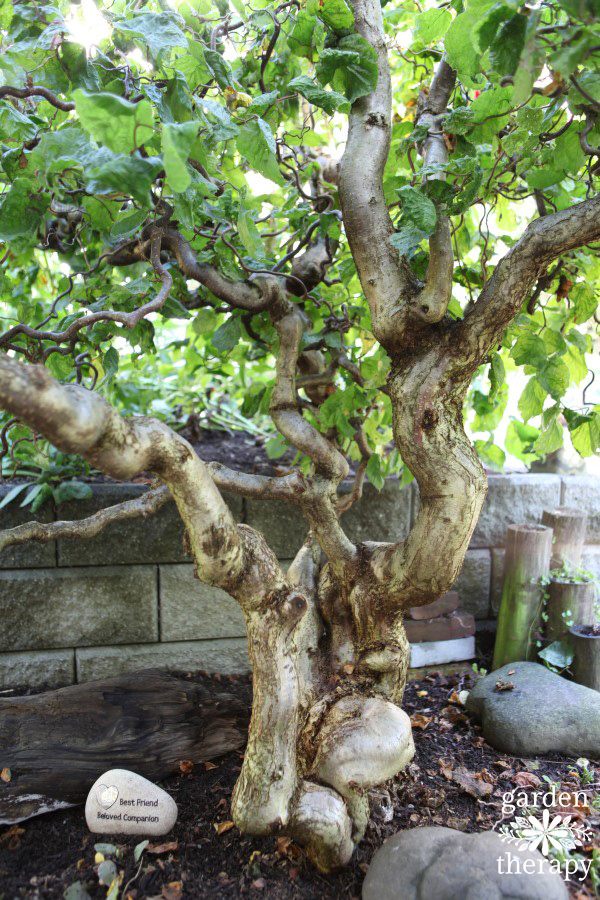
I like to use a hatchet or billhook saw to remove the suckers at the base.
Ideally, you want to get as close to the base as possible without cutting into the trunk. The nodes that send up more growth are located near where the suckers originate, so you need to remove those nodes in order to prevent regrowth. Otherwise, you will find yourself chopping down the same suckers over and over again.
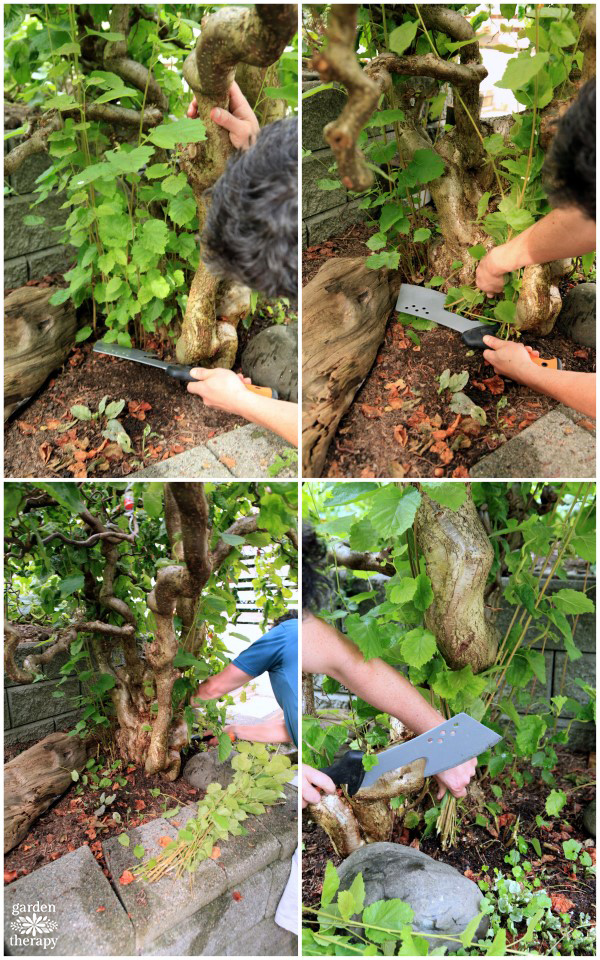
Remove Suckers at the Base of a Trunk
To remove suckers at the base of a trunk, use a hatchet to hook around the suckers and pull them off. The blade will prune those that do not pull off more easily. Use pruners or the saw of the billhook saw to clean up any stubs that are leftover.
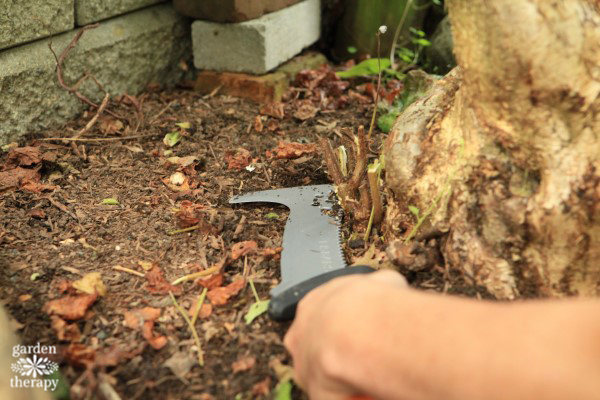
Remove Suckers Under Soil
To remove suckers under the soil, first try to pull them up. If they can easily be pulled off the roots then you are likely to get the growth nodes as well. If not, use the tip of the hatchet to loosen the soil around the suckers. Then, use the hook under the soil to cut the stem.
The hatchet can also be used to quickly remove watersprouts that grow in the spring and summer. Use the hook blade to swiftly remove the watersprouts at the branch. Then use the hatchet to quickly chop the pieces for the compost or yard waste bin.
I prune my espalier apple tree in the fall each year after letting it grow quite steadily throughout the summer. I use bypass pruners to remove the thinner branches, the billhook saw for the larger branches, and then quickly chop them up to fit in the green waste bin using the hatchet.
Here is my espalier apple before:
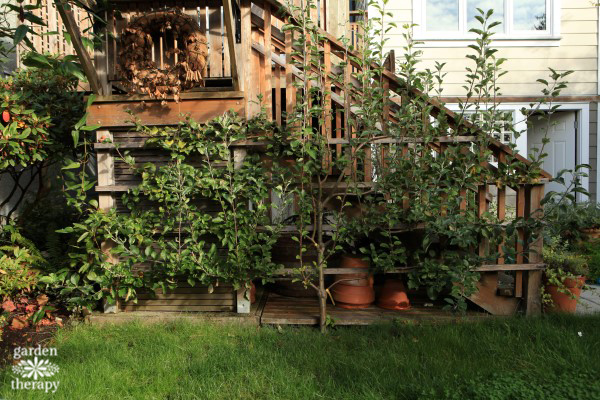
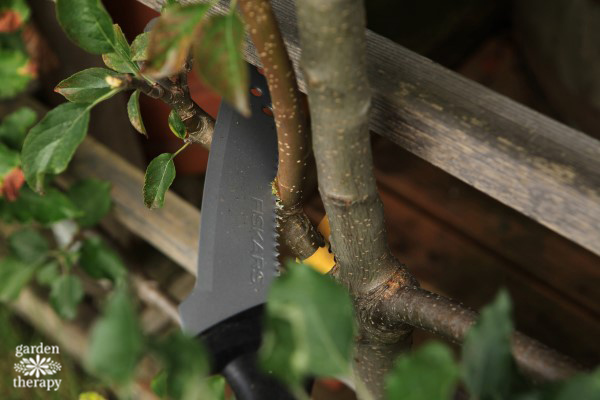

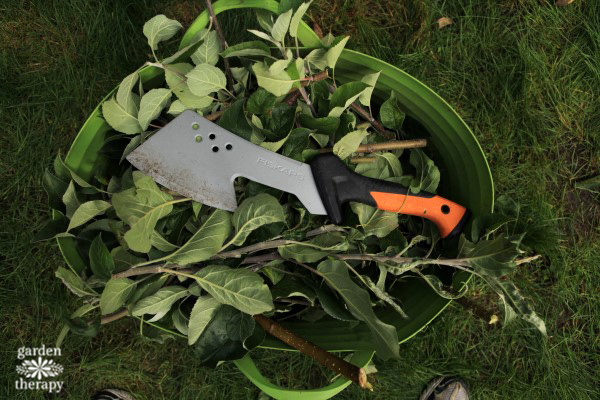
You can see it’s such a beauty once it’s all cleaned up and tidy for the fall. Here is the after:

These tools can also be used for cutting back unruly and overgrown brush, removing tree roots from the soil, and dividing perennials.
More Posts About Pruning
- Learn How to Prune Like a Pro! Pruning 101
- Want to Know When to Prune? This Will Answer All of Your Questions!
- Your Guide to Pruning Hedges
- The Best Garden Greenery for Holiday Decorating (and Which Ones to Avoid)
- Care and Pruning for Decorative Topiaries
- The Art of Espalier: Growing Fruit Trees in Small Spaces
- The Essential Guide to Growing Lavender

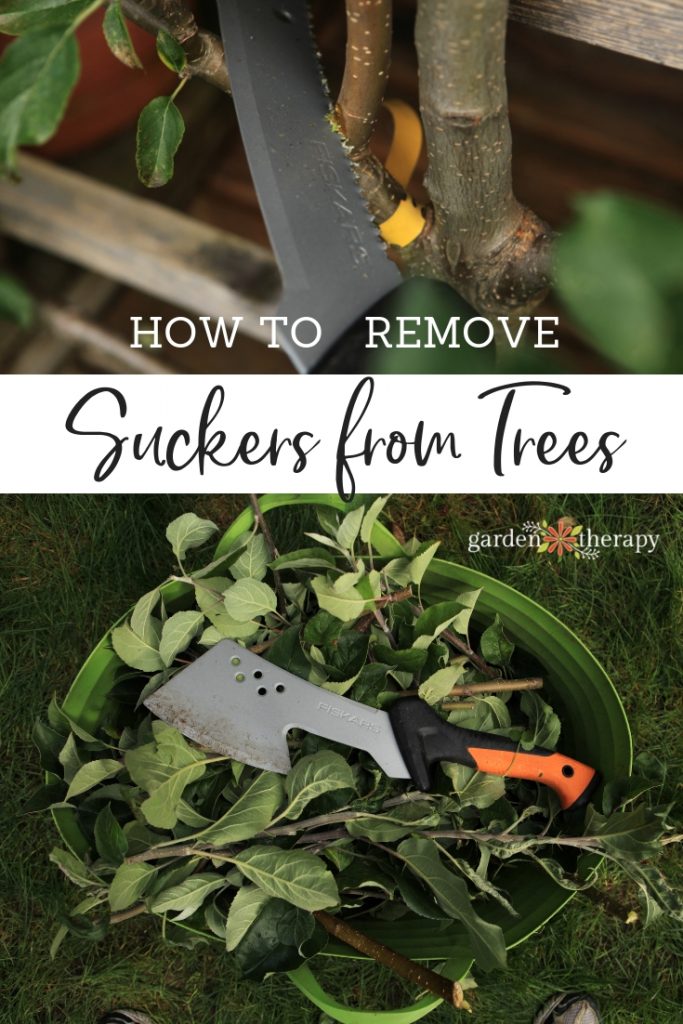



I know what I want for my birthday! I have a large yard in Scottsbluff, NE. I moved in about five years ago and took it from being in very bad shape to being beautiful. My free time in the Spring, Summer, and Fall are spent doing dirt therapy. My biggest project right now is saving our 100 year old crap apple tree. Between me and our local arborist, we are hoping to get at least another five years out of it.
Great article on waterspouts on trees. I love Fiskars products! You had me hooked on this article when you wrote about their tools. I am always pruning trees, woody ornamentals, perennials, etc. in my zone 8 garden in Columbia, SC. Roots love growing in garden beds. Clearing them out would be so much easier with Fiskars hatchet & billhook saw.
Thank you for the informative article & Fiskars tool giveaway!
Those are the coolest tools I’ve ever seen. How have I gardened and pruned this long without knowing about them? I would love to have set!
I received your Garden Therapy news letter this am. Thursday Feb 6th. Your contest for the Fiskars tools is over and the winner announced. Without a chance to enter What happened
I love love love your news letters
I live in Chilliwack, BC so we are a sort of “ no mans land” between Vancouver and Hope. We get the worst winds from the mountains and being in the Fraser Valley get the heat in the summer and the worst snow in the winter. Can’t wait for the snow and rain to let up a bit so that I can get back out to the garden again. The fruit trees have been pruned but not yet sulphur sprayed, rain won’t let up.
Look forward to your next news letter
Regards
Annie
Hi Annie, Thanks for the note! The contest ran when I first wrote this article in October 2016. Since then, it does pop up from time to time when people are looking for answers about suckers, so it would have landed in What’s in Season on the newsletter where I share the posts that are popular from that week. I hope that clears up the confusion!
Stephanie
I live in Southern Ontario where the ash borer has run amok. I have a 10” diameter (lower trunk) ash tree that was affected. A narrow strip of bark has come off where the town nailed an aluminium tag. Leaves were getting sparse last year, very few this year but the suckers (10) that came up last year are thriving this year. [there is good water supply from the ditch maybe offset by river rock all around the base to half the upper branch footprint]
Question: since i believe trees are sentient and we communicate i believe the tree will recover because I have sought The Lord daily for 6 months – what can I do to support The Lord manifesting recovery here on earth?
Yes the sap has gone and you can see the borer trails where the bark has come off.
Thank you, peter